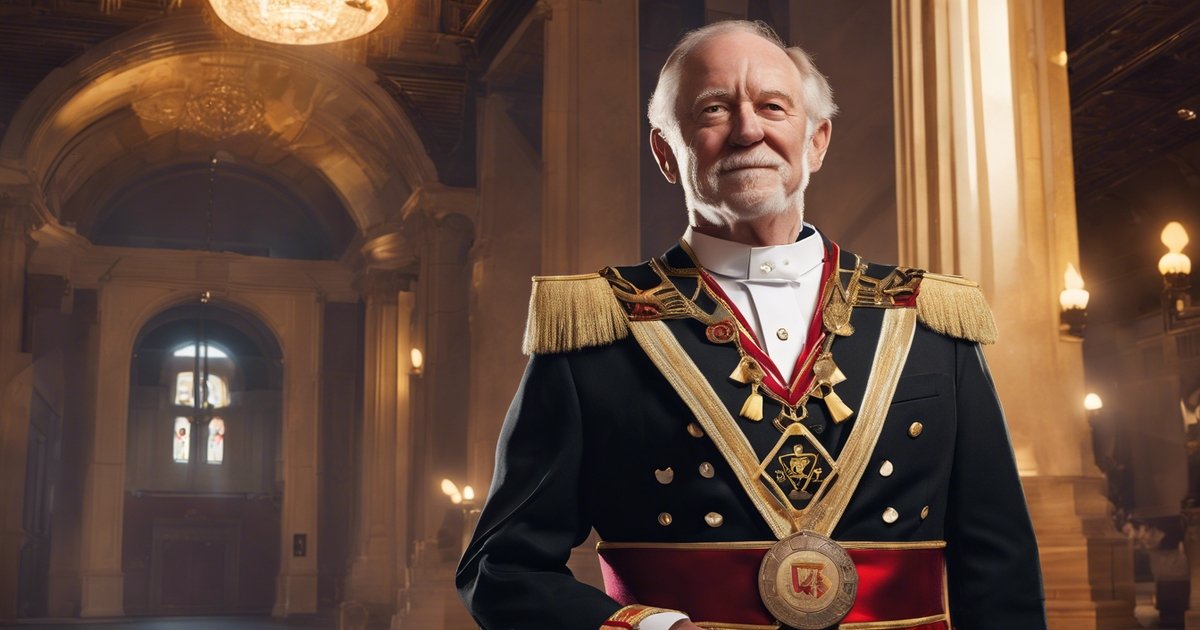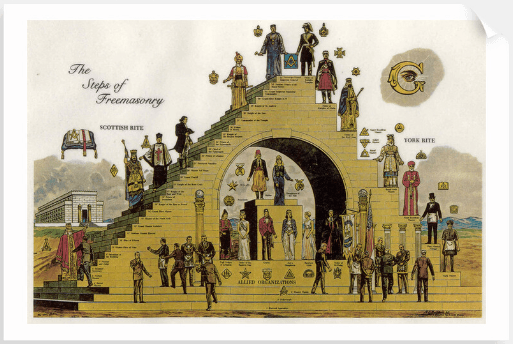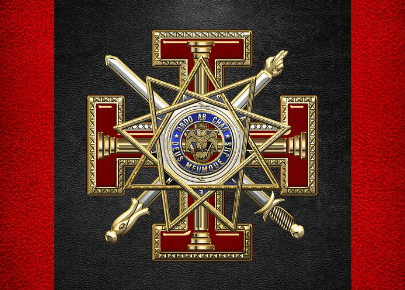
Did you know that only a select few, including the sovereign grand commander, may reach the prestigious Masonic 33rd degree in the fraternity of high degrees? Delving into the world of Freemasonry reveals secrets, rituals, and mysteries that captivate many. Uncover the significance of this highest degree and its profound impact on members’ lives in the world.
Discover the hidden truths behind this elusive rank, its historical importance, and the symbolic journey it represents for those who attain it as a mason, sr, or grand commander. Explore the allure of the Masonic 33rd degree and what sets it apart from other levels within Freemasonry.
You may also like: What Is The Difference Between Scottish Rite And Masons
Key Takeaways
- Understanding the historical evolution of the Scottish Rite sheds light on its development and significance within Freemasonry.
- Exploring the history of the Masonic 33rd Degree reveals its prestigious status and the symbolism associated with this pinnacle of achievement.
- Recognizing key figures and their contributions to the Scottish Rite illuminates the legacy and impact of influential Masonic leaders.
- Delving into the degree structure and symbolism provides insights into the teachings and principles conveyed through ritualistic practices.
- Contrasting the 33rd Degree with other Masonic degrees in different jurisdictions highlights the unique characteristics and spiritual depth of this advanced level of initiation.
Historical Evolution of Scottish Rite
Establishment in 1801
The Scottish Rite finds its origins in the establishment of the Supreme Council at Charleston, South Carolina, in 1801. This marked a pivotal moment in the development of Freemasonry.
Transition to the Masonic 33rd Degree System
From its early roots as the “Rite of Perfection,” the Scottish Rite underwent a significant evolution. It transitioned into the elaborate 33-degree system known today, each degree adding layers of symbolism and teachings.
Significance as a Full Rite
The Scottish Rite holds immense significance within Freemasonry as a comprehensive Rite. It complements and expands upon the teachings of Blue Lodge Masonry, offering members deeper insights into moral and philosophical principles.
History of the Masonic 33rd Degree

Origins
The masonic 33rd Degree in Freemasonry emerged in the early 18th century, evolving within the Scottish Rite branch. This prestigious degree symbolizes the highest level of achievement and knowledge attainable within Freemasonry.
Significance
Earning the masonic 33rd Degree signifies exceptional dedication, commitment, and service to the Masonic order. It is an honorary degree bestowed upon select members who have demonstrated outstanding contributions to their communities and society.
Recognition
Members who reach the Masonic 33rd Degree are recognized for their leadership, integrity, and philanthropic endeavors. They are often influential figures within their communities, contributing to charitable causes and embodying the core values of Freemasonry.
Key Figures and Their Contributions
Estienne Morin
Estienne Morin played a crucial role in spreading high-degree Freemasonry across the West Indies and North America. His efforts significantly contributed to the expansion of Freemasonry into new territories, marking a pivotal moment in its history.
Henry Andrew Francken
Henry Andrew Francken is renowned for producing manuscripts containing rituals that were instrumental in preserving and disseminating Masonic knowledge. His meticulous documentation of rituals provided a foundation for future generations to learn and understand the intricate practices within Freemasonry.
Influence on Scottish Rite Development
Key figures like Morin and Francken had a profound impact on shaping the development of the Scottish Rite. Their contributions laid the groundwork for the evolution of Masonic practices, ensuring that the traditions and teachings were passed down through generations with integrity and authenticity.
Degree Structure and Symbolism
Symbolic Lodges
Symbolic lodges play a crucial role in the degree structure of the 33rd degree in Freemasonry. These lodges are rich with symbolism, representing various aspects of moral lessons and philosophical teachings. Each degree within the Scottish Rite holds profound symbolic meanings, guiding members through a journey of self-discovery and enlightenment.
Transition from Blue Lodge Degrees
The transition from Blue Lodge degrees to the upper degrees of the Scottish Rite marks a significant advancement in a Mason’s journey. Moving beyond the foundational degrees, individuals delve deeper into esoteric knowledge and symbolism, unlocking new layers of understanding within Freemasonry’s teachings.
Unique Degree Progression System
The Scottish Rite offers a unique degree progression system that allows Master Masons from other rites to join its ranks. This inclusive approach enables individuals to explore additional levels of spiritual and moral teachings, expanding their knowledge and involvement within the fraternity. The Masonic 33rd Degree in the Scottish Rite is by far the hardest Masonic Degree to obtain.
Scottish Rite
The Scottish Rite stands out within Freemasonry due to its 33 degree system, which extends beyond the standard three degrees of Craft or Blue Lodge Freemasonry. This additional structure offers a more elaborate and in-depth exploration of Masonic teachings and principles.
Contrasting Degrees
In contrast, other Masonic bodies like the York Rite or the Ancient Arabic Order of the Nobles of the Mystic Shrine (Shriners) focus on different aspects of moral lessons and rituals. Each body within Freemasonry serves a unique purpose, contributing to the overall richness and diversity of the Masonic experience.
Distinctiveness in Concordant Bodies
The Scottish Rite differs from appendant bodies by overseeing a comprehensive range of degrees from the 1st to the 33rd, providing members with a progressive journey through esoteric knowledge and philosophical insights. This breadth allows individuals to deepen their understanding of Masonic teachings and history.
Closing Thoughts
Reflecting on the historical evolution, key figures, symbolism, and comparison of the Masonic 33rd degree within the Scottish Rite, you now grasp the depth and significance of this Masonic degree. By understanding its rich heritage and the contributions of prominent individuals, you gain insight into the intricate tapestry of Freemasonry.
As you delve deeper into the world of Masonic degrees, consider exploring further aspects of this ancient tradition. Embrace the opportunity to engage with like-minded individuals, attend lodge meetings, and participate in discussions to broaden your knowledge and experience within Freemasonry.
Frequently Asked Questions
What is the historical significance of the Masonic 33rd degree in Scottish Rite Freemasonry?
The Masonic 33rd degree in Scottish Rite Freemasonry holds great historical significance as it is the highest honor that can be bestowed upon a member. It signifies exceptional dedication, knowledge, and service to the fraternity.
How does one become a 33rd degree Mason?
To become a 33rd-degree Mason, one must first be a Master Mason in good standing. Then, they need to demonstrate outstanding commitment to the principles of Freemasonry over time. The invitation to join this prestigious degree is extended by the Supreme Council.
What are some key figures associated with the Masonic 33rd degree and their contributions?
Key figures such as Albert Pike and Henry Clausen have made significant contributions to the development and teachings of the Masonic 33rd degree. Their work has helped shape the rituals, symbolism, and philosophy of this advanced Masonic degree.
Can you explain the symbolism found within the structure of the Masonic 33rd degree in Scottish Rite Freemasonry, symbolic lodges, high degrees, and fraternity?
The symbolism within the structure of the Masonic 33rd degree is rich and profound, representing deep spiritual and moral lessons. Each aspect of the degree’s structure, from its rituals to its symbols, is designed to impart wisdom and inspire personal growth among members.
How does the Masonic 33rd degree in Scottish Rite Freemasonry compare with other Masonic degrees?
The Masonic 33rd degree stands out as the pinnacle of achievement within Scottish Rite Freemasonry, symbolizing advanced knowledge and dedication. While other Masonic degrees focus on various aspects of moral teachings and personal development, the 33rd degree represents the highest level of understanding and commitment within the fraternity.













